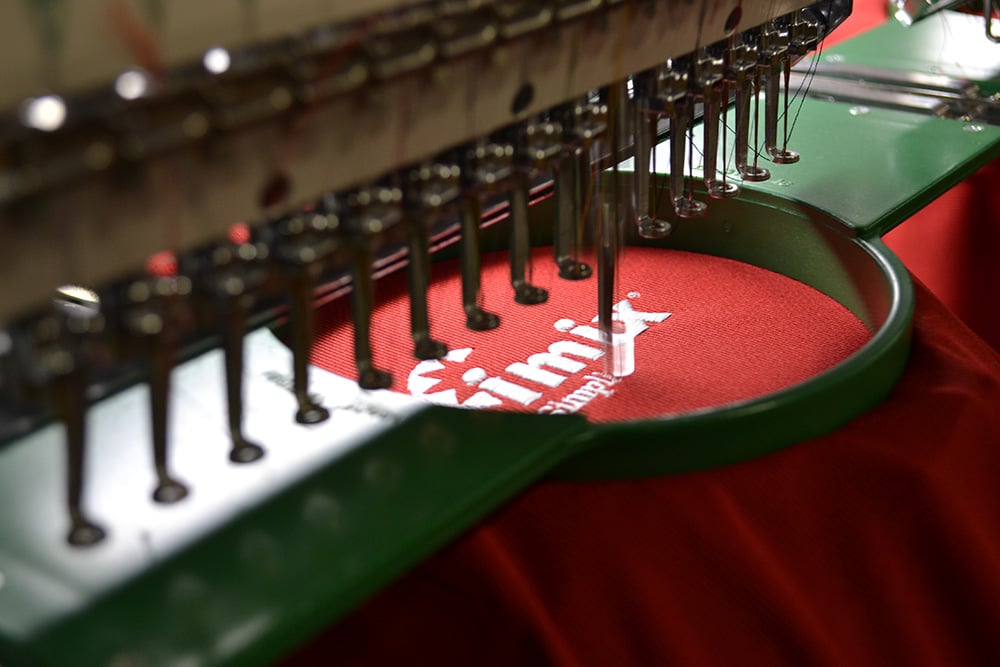Apparel is the smart and easy choice for your brand’s promotional products.
It has the highest recall rate of any promo item, which is why so many companies prefer to promote their brand using shirts, hats, and outerwear. But when it comes to choosing how to decorate your apparel, things can get tricky.
Unlike other promotional products, apparel can be decorated in many ways and choosing the right method of decoration is not always as easy as it sounds.

At Symphonix, we use a variety of decoration methods depending on the desired product. We understand that decoration techniques can be a challenging concept, so we have created a guide that can help you choose what is best for your promotional items.
Decoration Methods for Apparel
Embroidery
Embroidery is the craft of decorating fabric with needle and thread
Digital Print
Digital print is a form of apparel decoration that allows you to vibrantly print any digital logo onto an apparel item
Screen Print
Screen print works using mesh screens that are stretched over a frame to create a stencil of the image to be printed
Appliqué
Applique is a mix of laser cutting and embroidery but with layering
Direct to Film Transfers (DTFx)
Similar to DTG printers, the design is printed on a clear film and fed directly into a machine
Heat Transfer Vinyl
Heat Transfer Vinyl (HTV) is a very versatile method of decoration that can be tailor fitted in its color, finish, and texture to fit a variety of uses
Dye Sublimation
Dye sublimation is a process where art is printed with special sublimation ink on treated paper
FlexStyle Patches & Emblems
FlexStyle Patches & Emblems offer unique 3D designs for a variety of decorations
Laser Etch
Laser etching is a truly unique decoration method, where the laser melts a thin layer of fiber from the fabric/material
Learn more about decoration methods, including information on what they mean, how they are used, and when they are used.
 Steve Grace
·
Steve Grace
·
Steve has served as Chief Experience Officer (CXO) at Symphonix since 2021 and specializes in enterprise e-commerce solutions with a focus on end-to-end experiences. He leads the talented Creative Services / MarTech team and is a power user in Adobe Creative Suite, Hubspot, NetSuite, Microsoft 365, ZoomInfo, WordPress, and other platforms.



